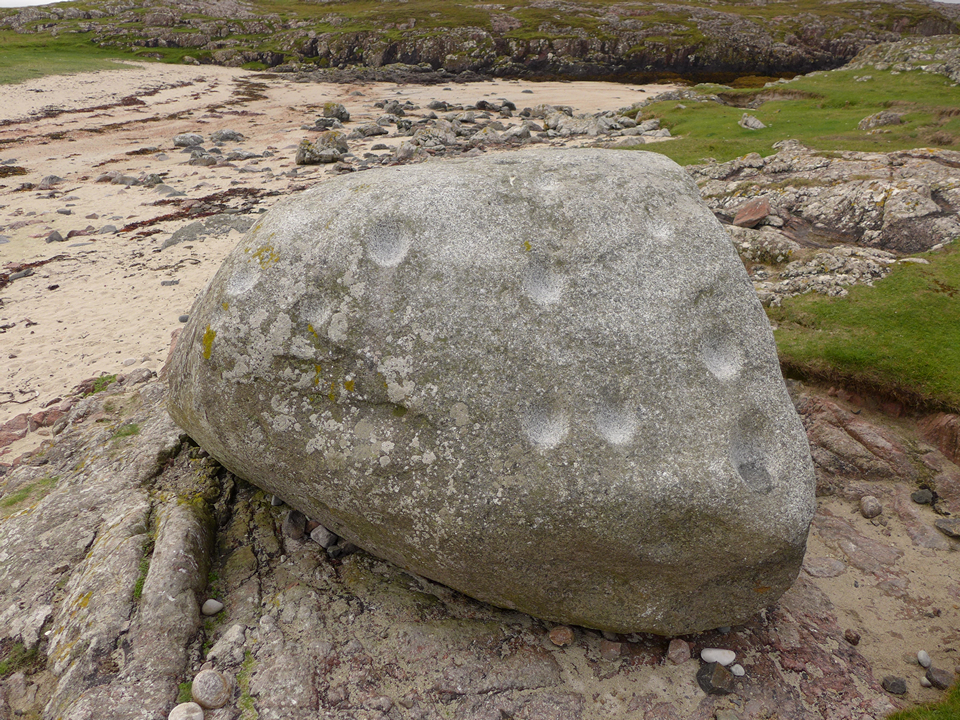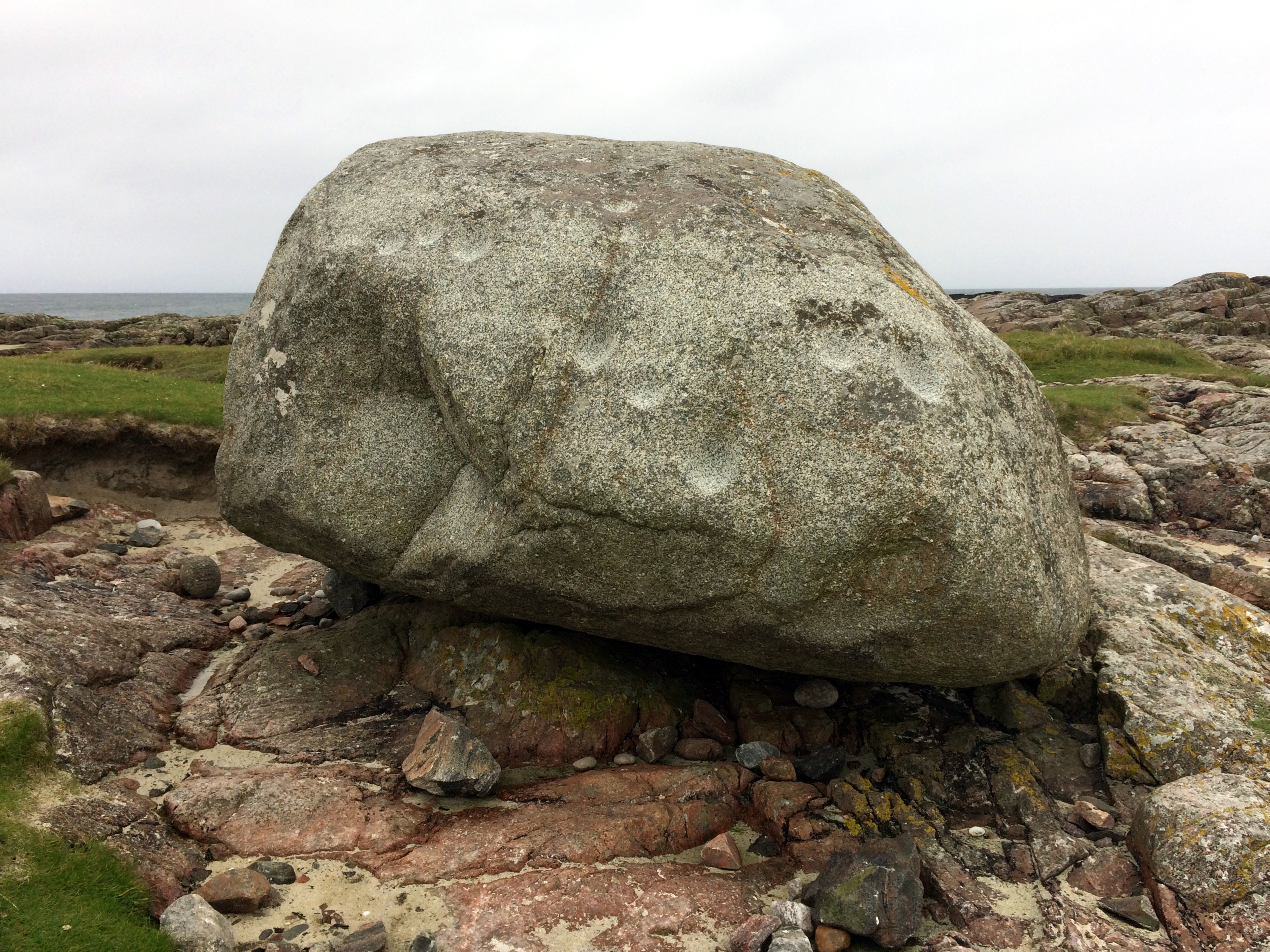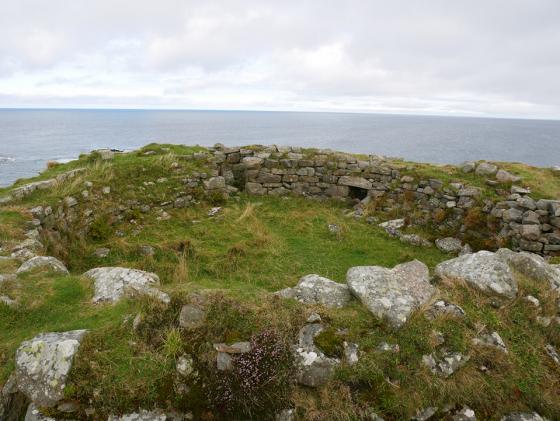
01/09/2018 – Clach a’ Choire. The cup marks are big. They looked to me like they have been have polished (if that’s the right word to use?) over the years by the many hands of visitors to this great stone.

01/09/2018 – Clach a’ Choire. The cup marks are big. They looked to me like they have been have polished (if that’s the right word to use?) over the years by the many hands of visitors to this great stone.

01/09/2018 – Clach a’ Choire

01/09/2018 – Clach a’ Choire

Cup Detail

Clach a’ Choire

Approaching Clach a’ Choire

The late prof Mick Ashton next to Clach a’ Choire.
I approached Clach a’ Choire from Vaul. I visited Dun Mor Vaul first then struck out west along some moorland hugging the coast. After about a mile I saw a large boulder on the edge of the sea. As well as taking photos I tried the ringing experiment with a large rock with surprisingly resonant results. The number of cup marks on the rock are impressive, though I didn’t feel it necessary to check the 53 suggested by the imaginative info board.
All in all, a curious site.
Perhaps, unless we except the so-called “Druidical” Standing-stone in Balinoe, the oldest memorial in Tyree, older even than the Culdee Churches, is the Clach a Choire, the ringing-stone – literally the “kettle” stone- which stands a little removed from the shore near Balephetrish, not far from the old marble quarries. It is a mass of stone, roughly cubical, balanced upon one edge, and computed to weigh about ten tons. When struck, no matter where, or however slightly, it sends forth a clear ringingnote. The people have a tradition that the stone is hollow and contains gold, but happily they have also another tradition to the effect that when the ringing-stone is cleft, Tyree will sink. On the surface of the stone are some thirty circular indentations, which I think most persons familiar with such things in other places, would unhesitatingly suppose to be cup-markings, but which, it is only fair to say, are also explained away as traces of many years of experimental stone-tapping. Apart from the fact that it seems hardly likely that even in the course of ages, native curiosity would compass so prominent a result, there is nothing to differentiate this rock from others admittedly “cup-marked” elsewhere, and they are found in great numbers in the British Isles and in Scandinavia.
From The Outer Isles by A Goodrich-Freer, 1902.
I rather like the wording of this earlier commentary on the rock:
At Balphetrish there is the famous Ringing Stone. Its dimensions are 7 feet by 6 square, and 4 1/2 feet thick. It is of a dull grey colour, very hard and compact, and totally different from the surrounding rocks. It is evidently spotted with stars of black mica. Its hardness is so great that it is not possible with a common hammer to break off even the smallest bit. It is not intersected by any vein or cutter. Its solidity and equal texture must account for the clear metallic sound, for when struck on any place with a stone or a hammer, it sounds or rings like brass or cast iron. It has for ages past excited the admiration of the common people.
It excites my admiration too and I’d definitely like to see it, but I would try to resist trying to break a bit off.
From The Scots Magazine volume 60 (1798).
Photos of the cup-marked stone in its dramatic bay.
The record says “There can be no doubt that these markings are artificial and, while several of them are unusually large, the presence among them of many small circular cups, indistinguishable from prehistoric cup-markings, suggest that the whole assemblage may be prehistoric in origin (RCAHMS 1980). ”



























